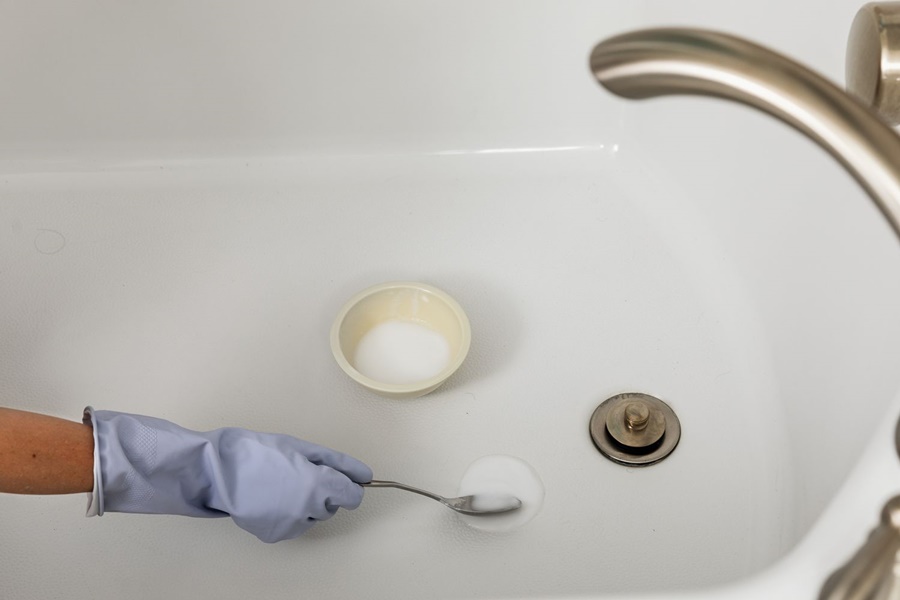A sparkling clean bathtub is essential for both hygiene and comfort. Over time, soap scum, hard water stains, mildew, and grime can accumulate and leave your tub looking dull and dirty. Fortunately, baking soda a powerful yet gentle abrasive offers an effective, non-toxic solution for deep-cleaning any bathtub, whether it’s porcelain, acrylic, or fiberglass.
Below, we outline the most thorough, detailed, and results-driven method to clean your bathtub using baking soda and a few household essentials.
Why Baking Soda Works So Well for Bathtub Cleaning
Baking soda (sodium bicarbonate) is a natural alkaline compound with mild abrasive properties that effectively lifts grime without scratching delicate surfaces. It also neutralizes odors, making it a dual-purpose cleaner and deodorizer. When combined with other common household ingredients like vinegar, dish soap, or hydrogen peroxide, its cleaning power becomes even more formidable.
Supplies You'll Need
Before starting, gather the following:
Baking soda
White distilled vinegar
Dish soap (preferably biodegradable)
Hydrogen peroxide (for stubborn stains)
Spray bottle
Microfiber cloths
Non-abrasive sponge or scrub brush
Old toothbrush (for crevices)
Rubber gloves (optional)
Step-by-Step Instructions: Cleaning a Bathtub with Baking Soda
1. Remove Loose Debris and Items
Start by clearing the tub of any shampoo bottles, soap bars, razors, or bath toys. Use warm water to rinse the surface and remove loose dirt, hair, or dust. This step ensures that the baking soda will adhere effectively to grime and buildup.
2. Sprinkle Baking Soda Generously
Cover the entire surface of the bathtub sides, base, and edges with a thick, even layer of baking soda. Pay extra attention to areas with visible stains or soap scum. For vertical surfaces, lightly dampen the area first so the baking soda sticks better.
3. Create a Cleaning Paste for Heavier Build-Up
In a small bowl, mix baking soda with water to create a spreadable paste. For extra grease-cutting power, add a squirt of dish soap. Apply this mixture directly to:
Soap scum rings
Greasy residue
Discolored spots or mildew
Let the paste sit for 15–20 minutes to allow it to break down the grime.
4. Scrub Thoroughly Using the Right Tools
Use a soft sponge or non-abrasive brush to scrub in circular motions. For corners, edges, and tight crevices, use an old toothbrush. Be thorough but gentle especially with acrylic tubs, which can scratch if scrubbed too hard.
Pro Tip: For textured surfaces, scrubbing with a damp microfiber cloth can help lift dirt more efficiently.
5. Spray with Vinegar for a Natural Chemical Reaction
Once you’ve scrubbed the entire surface, fill a spray bottle with white vinegar and spray it over the baking soda-covered areas. The acid-base reaction will cause a fizzing effect that helps lift embedded dirt and soap scum. Let the fizz work for 5–10 minutes before rinsing.
6. Rinse with Warm Water
Use warm water to thoroughly rinse away all baking soda and vinegar residue. A handheld showerhead works best, but if you don’t have one, use a large cup or jug to rinse the tub multiple times. Ensure no residue remains, as leftover baking soda can dry into a powdery film.
7. Dry and Buff for a Sparkling Finish
Wipe the entire surface dry using a clean microfiber cloth. This prevents water spots and gives your bathtub a polished, gleaming finish.
Advanced Techniques for Tough Stains
Sometimes, ordinary cleaning isn’t enough. Use these advanced tactics for specific challenges:
Rust Stains:
Make a paste using baking soda and hydrogen peroxide. Apply to the stained area and let sit for 30 minutes. Scrub gently and rinse.
Mildew or Mold:
Sprinkle baking soda directly on the mildew spots, spray with vinegar, let it fizz, then scrub with a toothbrush. Rinse and dry thoroughly.
Hard Water Stains:
Create a paste of baking soda and lemon juice. The citric acid in lemon juice breaks down mineral deposits effectively. Let sit for 10–15 minutes, scrub, and rinse.
How Often Should You Clean Your Bathtub with Baking Soda?
For regular maintenance, we recommend cleaning your bathtub with baking soda once a week. This routine prevents buildup, ensures hygiene, and keeps your tub looking pristine. For deep cleans, a bi-weekly or monthly session using the full process outlined above is ideal.
What Types of Bathtubs Can You Clean with Baking Soda?
Baking soda is safe and effective on most bathtub materials, including:
Porcelain
Ceramic
Acrylic
Fiberglass
Enameled steel
Always test a small area if you’re unsure, especially for colored tubs or those with special coatings.
Extra Tips for a Long-Lasting Clean
Ventilate the bathroom during and after cleaning to reduce humidity and prevent mold growth.
Keep a squeegee handy to wipe down the tub after each use.
Use a bathtub tray to keep toiletries off the tub surface, minimizing soap scum buildup.
Install a water softener if you have hard water to reduce mineral deposits.
Eco-Friendly and Safe for the Whole Family
One of the most significant advantages of using baking soda is that it’s non-toxic, fragrance-free, and environmentally friendly. It’s safe around children, pets, and people with sensitive skin or allergies.
Conclusion
Cleaning your bathtub with baking soda isn’t just effective—it’s cost-efficient, safe, and environmentally responsible. By following this in-depth cleaning process, you can restore your tub to a spotless, sanitary, and gleaming state with minimal effort and no harsh chemicals. Stick to this method regularly, and your bathroom will remain a relaxing and inviting space.

